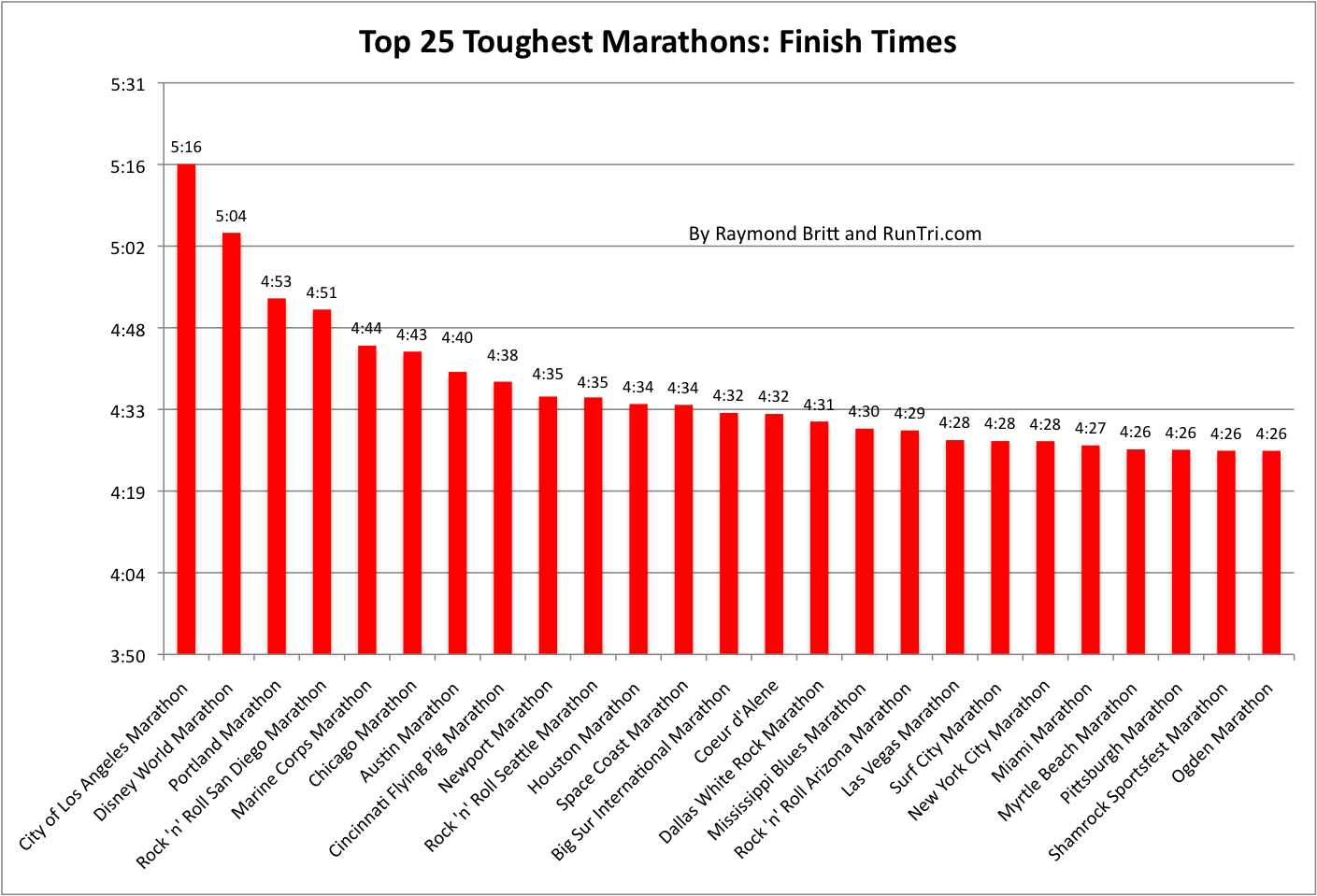Which Marathon is the Hardest
The Barkley Marathons is widely considered the hardest marathon due to its extreme terrain and restrictive rules. Originating in Tennessee, participants face grueling challenges.
Competing in the Barkley Marathons means navigating through dense forests, treacherous terrains, and steep inclines, pushing even the most elite runners to their limits. Established in 1986, this unmarked and unassisted race is shrouded in mystery, with only a few participants managing to finish within the 60-hour time limit.
The self-sufficiency required and the unpredictable weather conditions make this race a true test of physical and mental endurance. This marathon is not for the faint of heart, attracting only the most fearless and daring runners seeking the ultimate challenge in the world of endurance racing.

Credit: raceraves.com
Marathons
Marathons are renowned for being one of the most grueling and demanding races, pushing runners to their physical and mental limits. Not all marathons are created equal, with some posing significantly greater challenges than others. Let’s explore the different types of marathons and delve into a brief history of these iconic endurance events.
Different Types Of Marathons
1. Road Marathons – These marathons are run entirely on roads, typically through urban areas and countryside, offering a mix of challenging terrain and scenic views.
2. Trail Marathons – Trail marathons take place on off-road routes, often through rugged and hilly terrain, providing a unique test of endurance and athleticism.
3. Ultra Marathons – Ultra marathons exceed the standard 26.2-mile distance, with races ranging from 50 kilometers to 100 miles or more, pushing runners to their absolute limits.
Brief History Of Marathons
The marathon distance originates from the legendary tale of Pheidippides, an ancient Greek messenger who ran approximately 26 miles from the battlefield of Marathon to Athens to deliver news of a victory against the Persians. This act of astounding endurance has inspired the modern marathon race, which was established as a competitive sporting event in the late 19th century. The inaugural modern Olympics in 1896 featured a marathon and since then, marathons have become a celebrated global phenomenon, attracting athletes and enthusiasts from all corners of the world.

Credit: www.28degreescard.com.au
Criteria For Difficulty
Marathons vary in difficulty based on several key factors that challenge participants throughout the course.
Elevation And Terrain
The terrain of a marathon course can significantly impact its level of difficulty. Rolling hills, steep inclines, or rugged trails require runners to have endurance and strength.
Weather Conditions
Weather plays a crucial role in determining the difficulty of a marathon. Extreme heat, cold, wind, or humidity can test the physical limits of runners and impact their performance.
Course Design And Layout
The layout of a marathon course can influence its level of difficulty. Factors such as sharp turns, narrow paths, or multiple loops can challenge runners’ speed and concentration.
Marathons Known For Difficulty
The Boston Marathon
The Boston Marathon is renowned for its challenging course, featuring hilly terrain and unpredictable weather conditions.
Runners must conquer the infamous Heartbreak Hill, a steep incline near the end of the race that tests their endurance.
The New York City Marathon
The New York City Marathon attracts elite athletes and amateurs alike to navigate its demanding city streets and bridges.
Participants face crowded routes and diverse terrain throughout the five boroughs of New York City.
The Comrades Marathon
The Comrades Marathon in South Africa is one of the world’s oldest ultramarathons, stretching over a challenging 90 kilometers.
Runners tackle steep climbs, descents, and time cutoffs, making this race a true test of physical and mental strength.
Factors Affecting Difficulty Ranking
The difficulty ranking of marathons is influenced by a variety of factors, including elevation, weather conditions, terrain, and course design. Each marathon presents its own unique challenges, making it difficult to determine which one is the hardest. However, factors like steep inclines, high altitudes, and extreme temperatures often contribute to a marathon’s level of difficulty.
Factors Affecting Difficulty Ranking When looking at which marathon is the hardest, several factors come into play to determine the overall difficulty of a race. Understanding these factors can help runners and spectators gauge the level of challenge each marathon presents. Opinions of professional runners, average finishing times, and the number of participants all contribute to the overall difficulty ranking of a marathon. Opinions of professional runners Professional runners offer valuable insights into the difficulty of marathons based on their experience and expertise. Their opinions on the elevation profile, weather conditions, and course layout are crucial in determining the level of difficulty. Furthermore, their feedback on the overall race atmosphere and logistical challenges provides a holistic view of the marathon’s toughness. Average finishing times The average finishing times for a marathon reflect the level of difficulty faced by runners. A marathon with significantly slower average times typically indicates a more challenging course, whereas faster times might suggest a relatively easier terrain. Understanding these finishing times can give a clear indication of the difficulty level of a particular marathon. Number of participants The number of participants can also influence the perceived difficulty of a marathon. Races with a larger number of participants often signify a level of competitiveness and can present challenges in navigating crowded course conditions. Additionally, larger races may have more stringent qualifying standards, making them inherently more difficult for many runners. Understanding these factors can provide valuable insight into the overall difficulty ranking of marathons, allowing runners to make informed decisions when choosing their next race.
Credit: www.cbsnews.com
Frequently Asked Questions On Which Marathon Is The Hardest
Q: Which Marathon Is Considered The Hardest In The World?
A: The Barkley Marathons, held in Tennessee, is renowned for its extreme terrain and strict entry requirements.
Q: What Challenges Make The Barkley Marathons So Difficult?
A: The Barkley Marathons feature treacherous terrain, unmarked trails, unpredictable weather conditions, and a limited 60-hour time limit.
Q: How Can I Prepare Myself For The Toughest Marathons?
A: To prepare for challenging marathons, focus on hill training, trail running, mental fortitude, proper nutrition, and maintaining a consistent training schedule.
Conclusion
Ranking marathons by difficulty depends on individual preferences and challenges. The Boston Marathon presents formidable hills and unpredictable weather, while the Barkley Marathons tests extreme endurance and navigation skills. The Eco-Challenge Fiji demands physical and mental toughness in a diverse environment.
Each marathon offers its own unique and arduous challenges, making it hard to definitively declare which one is the hardest. Ultimately, the hardest marathon is a subjective determination based on personal strengths, weaknesses, and aspirations.





